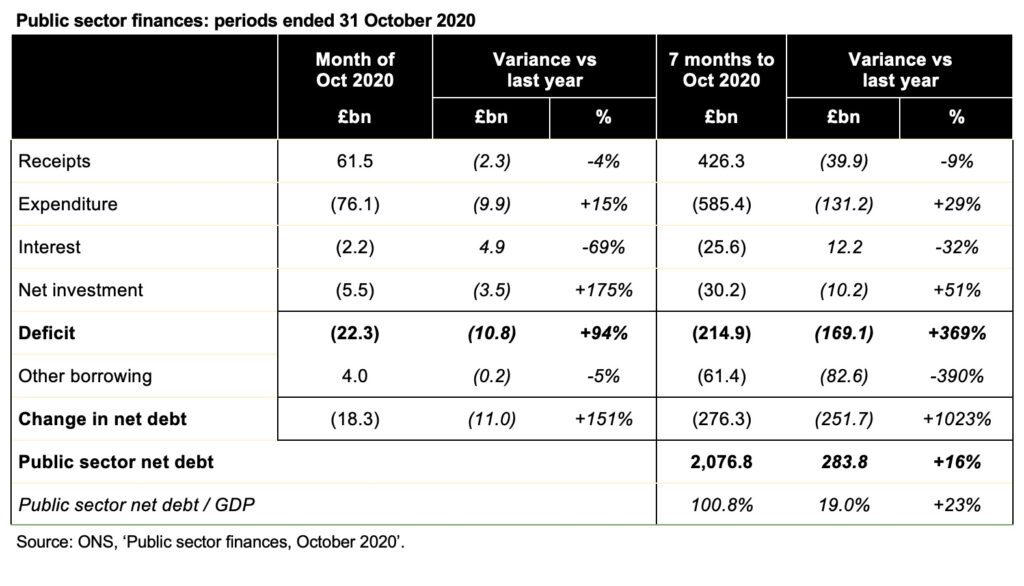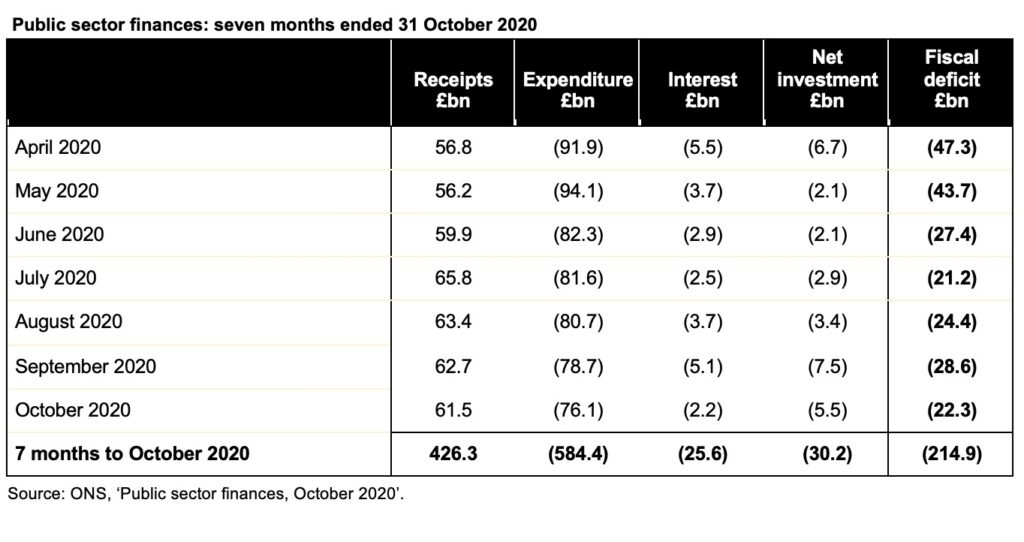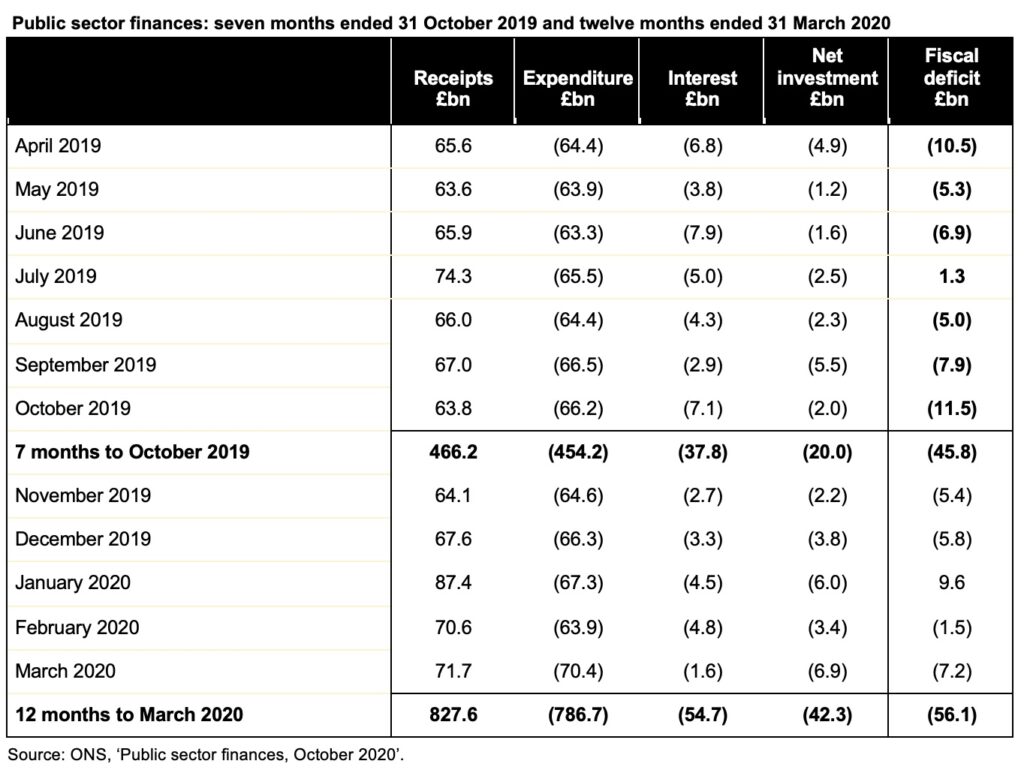ICAEW’s public sector director Alison Ring has called for the focus of Wednesday’s Spending Review to be on how the government can put in place building blocks for economic recovery.
The latest public sector finances from the Office for National Statistics (ONS) for October 2020 show the UK incurred a £22.3bn deficit in October, bringing the total shortfall over seven months to £214.9bn – £169.1bn more than the £45.8bn recorded for the same period last year.
Commenting on the figures, Alison Ring public sector director ICAEW’s said that the government was spending at a slower rate than in previous months, it was still spending heavily during October.
“Fortunately, ultra-low borrowing costs mean that the Chancellor will not have to worry about having to plug the fiscal hole with Wednesday’s Spending Review,” said Ring. “The long-delayed National Infrastructure Strategy will be key, as will proposals to reform government operations to make them more effective.
Ministers must be hoping that recent positive news on vaccines will allow the focus in 2021 to change from providing emergency life-support for the economy to ‘building back better’.”
Net debt increase
According to the ONS, falls in VAT, corporation tax and income tax drove lower receipts, while large-scale fiscal interventions resulted in much higher levels of expenditure. Net investment is greater than last year, as planned, while the interest line has benefited from ultra-low interest rates.
Public sector net debt increased to £2,076.8bn or 100.8% of GDP, an increase of £276.3bn from the start of the financial year and £283.8bn higher than in October 2019. This reflects £61.4bn of additional borrowing over and above the deficit, most of which has been used to fund coronavirus loans to business and tax deferral measures.

The combination of receipts down 9%, expenditure up 29% and net investment up 51% has resulted in a deficit for the seven months to September 2020 that is almost four times the budgeted deficit of £55bn for the whole of the 2020-21 financial year set in the Spring Budget in March, despite interest charges being lower by 32%. The cumulative deficit is approaching five times as much as for the same seven-month period last year.
Cash funding (the ‘public sector net cash requirement’) for the month was £17.0bn, the lowest monthly amount in this financial year so far. The total for seven months was £274.8bn, compared with £6.4bn for the same period in 2019.
Interest costs have fallen despite much higher levels of debt, with extremely low interest rates benefiting both new borrowing to fund government cash requirements and borrowing to refinance existing debts as they have been repaid.
The deficit remains on track to exceed £300bn in the financial year to March 2021, with the Institute for Fiscal Studies’ recent IFS Green Budget 2020 annual pre-Budget report suggesting that the deficit for the full year to March 2021 could reach £350bn or 17% of GDP. The Office for Budget Responsibility is scheduled to publish revised forecasts on Wednesday 25 November
Some caution is needed with respect to the numbers published by the ONS, which are expected to be repeatedly revised as estimates are refined and gaps in the underlying data are filled. In particular, the OBR points out that the ONS has yet to record any allowance for losses that might arise on the more than £100bn of tax deferrals, loans and guarantees provided to support businesses through the pandemic.


The ONS made a number of revisions to prior month and prior year fiscal numbers to reflect revisions to estimates and changes in methodology. These had the effect of reducing the reported fiscal deficit in the first six months from the £208.5bn reported last time to £192.6bn and increasing the reported deficit for 2019-20 from £54.5bn to £56.1bn.